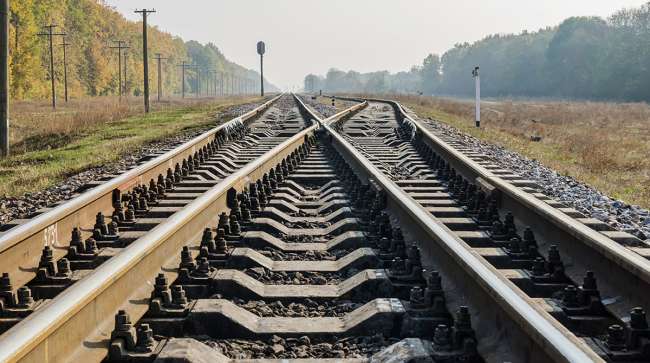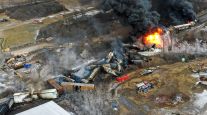Senior Reporter
House Transportation Leaders Press Freight Rail Safety

[Stay on top of transportation news: Get TTNews in your inbox.]
The top Democrats on the House transportation panel highlighted workplace safety concerns across freight rail operations shortly after the Biden administration awarded the industry grants to alleviate supply chain woes.
Democratic Reps. Peter DeFazio of Oregon and Donald Payne of New Jersey, chairmen of the transportation and railroads panels, respectively, pointed to workforce fatigue linked to the movement of freight along rail lines.
“The freight rail industry has lost nearly a third of its workforce in the past eight years. The workers who remain report they are being worked harder, with longer and more unpredictable hours,” said Payne during a railroads subcommittee hearing on June 14. “They say these conditions are worsening fatigue and making an industry that’s inherently demanding even tougher to work for.”
Today, I held a hearing in my Rail subcommittee to discuss how America can improve freight rail safety. I want to make sure we are doing everything we can to prevent worker fatigue and protect the safety of workers on freight cars and the communities on rail lines nationwide. pic.twitter.com/7MW3DbcRFK — Rep. Donald Payne Jr (@RepDonaldPayne) June 14, 2022
Payne added: “It’s left our national rail system more rigid and less able to respond to the ongoing supply chain shocks.”
DeFazio, who cited input from representatives associated with the industry’s workforce, argued that rail employees who work long hours could result in “untenable fatigue and safety concerns, contributing to poor morale, and prompting some to leave the industry — a stark change from what has traditionally been a sought-after career.”
The committee leaders referred to policy recommendations issued by the National Transportation Safety Board. The independent agency has repeatedly called for improving rail worker safety. “Too many people working on or around railroad tracks, such as train crews, maintenance-of-way employees, and mechanical workers, are getting killed or injured in preventable accidents involving train or equipment movement,” NTSB noted in its 2021-2022 transportation safety improvements report.
"We respectfully urge policymakers at all levels — in this committee, in the FRA, and elsewhere — to be proactive, collaborative partners with railroads to meet our shared safety goals," @nscorp COO Cynthia Sanborn told the FRA today. pic.twitter.com/TWxHRY3Pzt — AAR (@AAR_FreightRail) June 14, 2022
The railroads subcommittee’s top Republican, Rep. Rick Crawford of Arkansas, highlighted myriad safety improvements industrywide while calling for the advancement of automated track inspection safety technology. That technology, he said, “has been shown to decrease accidents, identify new safety issues, and free up safety inspectors to focus on other important duties.” He also suggested federal grants have the ability to assist with upgrades, highway-rail grade crossings and network connectivity.
The Association of American Railroads, focusing on the link between rail employees and technology, emphasized data-driven policymaking. “A vast wealth of data and experience shows that humans and technologies are both needed to perform important functions and together they improve outcomes,” AAR President and CEO Ian Jefferies told federal policymakers. “Technology is key to continued gains in key planks of the Biden agenda, including ever-improving safety, the climate and supply chain fluidity. We need sensible and coherent policies now more than ever to propel railroads into the future.”
Want more news? Listen to today's daily briefing above or go here for more info
This month, the Federal Railroad Administration announced nearly $400 million in consolidated rail infrastructure and safety improvements, or CRISI, grants. The funding would be dedicated for 46 projects to modernize railways and supply chains, reduce congestion and transport passengers and goods.
“This round of CRISI grants, one of the largest ever, is a major step forward for the Biden-Harris administration’s efforts to revitalize and rebuild the country’s infrastructure,” FRA Administrator Amit Bose said June 2. “These awards will allow FRA to support rail projects that lay the groundwork for future economic growth.”
“Americans deserve a world-class rail system that allows people and goods to get where they need to go more quickly and affordably, while reducing traffic and pollution on our roads,” added Transportation Secretary Pete Buttigieg.




